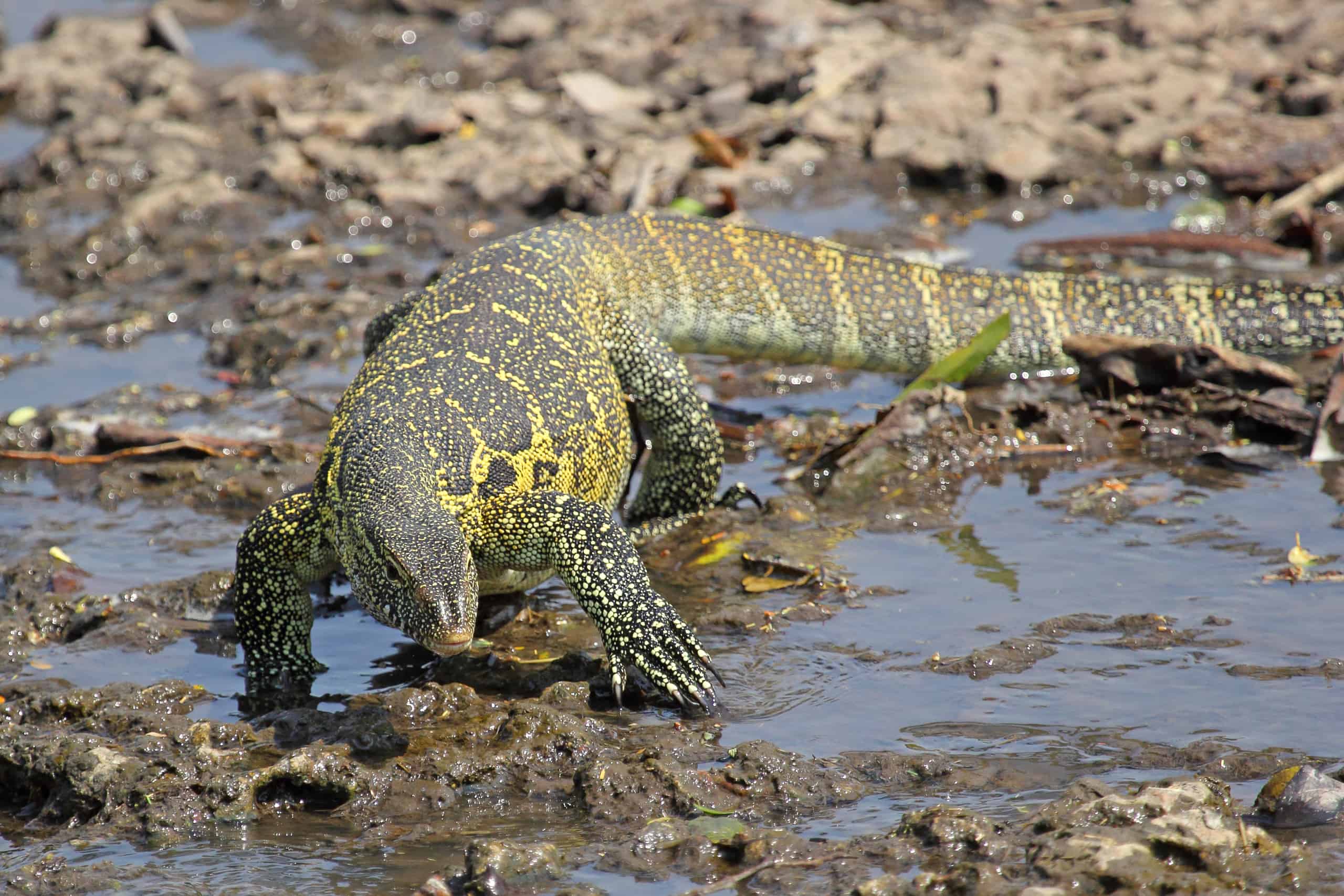Continue reading for our analysis...

When we think of Africa and the animals that are present, it’s easy to think of the Big Five. The Big Five animals that are well known are lions, buffalo, African elephants, black rhinos, and leopards. However, thousands of different animals roam this continent other than the African Big Five. And sometimes, we get the pleasure of being able to capture glimpses of these other animals and how they live.
Monitor Lizard Sighting in Zimbabwe
The short YouTube clip at the top of this blog post takes us to Zimbabwe. The Snakes in Zimbabwe YouTube page posted this video. This channel shares animals other than snakes commonly seen in South Africa. We see videos of elephants, leopards, buffaloes, and lions.
Giant Lizard Hunting for Eggs
At the start of this video, we see a massive monitor lizard crawling through thick brush in search of food to eat. Its head is moving back and forth, its tongue shooting in and out of its mouth. Like a snake, a monitor lizard is able to pick up scents through its tongue, so we can assume the monitor has detected a scent that is drawing it towards a possible meal. As we continue to watch, you’ll notice it reaches an area that appears to be a giant nest.
As it crawls atop the nest, we are startled by the sight of a baby crocodile. It may be a newborn that’s just come from its shell. It’s a tense moment as we wonder if the monitor will detect and swallow the baby. Instead, the monitor rummages about in the nest and soon picks up a large crocodile egg in its mouth. The lizard struggles to crack the egg in order to drink its contents and is finally successful, while also swallowing the crushed shell.
The baby croc is still dangerously close to the giant lizard, sitting on the side of the nest. The monitor finds a second egg and goes through the same process to consume it. As it finishes up, the baby croc begins to crawl closer to the lizard and then turns left. Unfortunately, it has caught the attention of the monitor lizard, who begins to follow it, its tongue shooting in and out rapidly as if tasting the potential meal.
The video ends with the little fella skirting down the left side of the nest, while the monitor is still interested in pursuit. Will it catch the poor critter? We hope not!
Nile Monitor Lizard in Africa

The Nile monitor lizard can run up to 18 miles per hour.
©Dave Montreuil/Shutterstock.com
There are estimated to be around 60 species of the monitor lizard. They can be found living throughout Africa and Asia. And their population is heavily dependent on each species.
Journal studies such as the Monitor Lizards: Pan-African Check-List of Their Zoogeography conclude that the Nile lizard has the widest distribution. The Nile monitor is also known as the water monitor (Varanus niltoticus). Their population is listed on the IUCN Red List as being of the least concern for extinction.
The Nile monitor lizard is approximately 13-45 pounds and can reach over seven feet long. These highly aggressive lizards prey on birds, reptiles, fish, and eggs. And as we can see from the video about this monitor, the lizard was hunting for some good crocodile eggs!
Thank you for reading! Have some feedback for us? Contact the AZ Animals editorial team.







